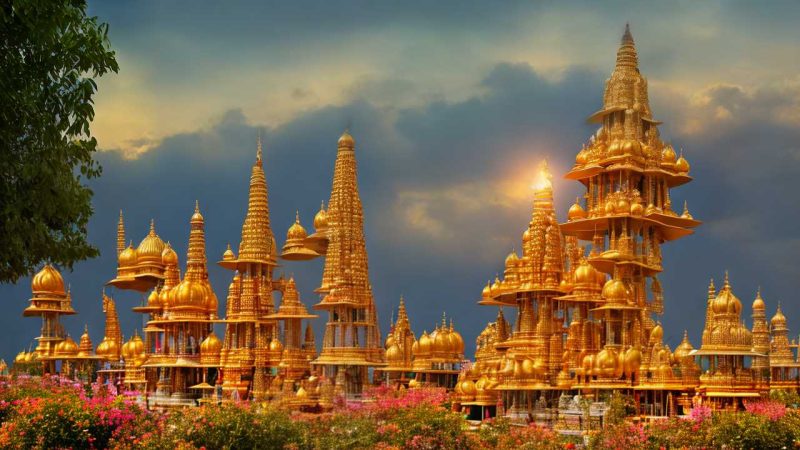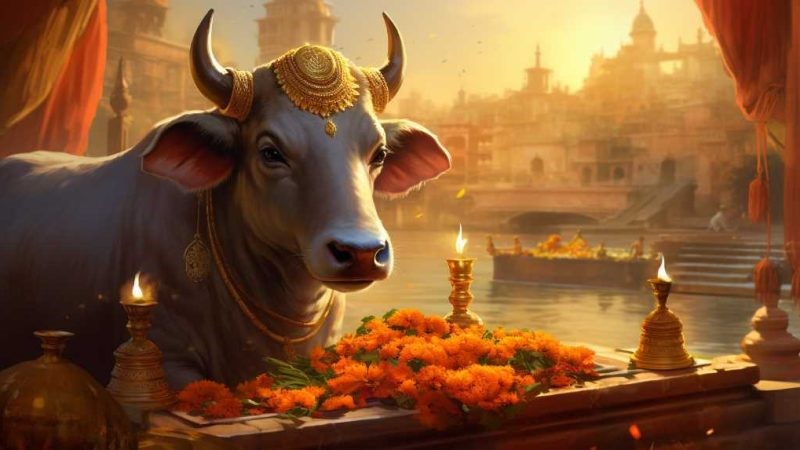Uncovering Hindu Temples in the Heart of Germany

Hindu temples are becoming a part of Germany’s varied culture, showing how the country’s religious scene is changing. These temples mix Eastern religious practices with the Western world, helping to connect different cultures and their customs. Unlike the usual Gothic or Baroque buildings seen in Germany, these Hindu temples offer a chance to understand how different cultures can come together. They also make us think about what they mean for the people living nearby, the importance of keeping historical styles alive, and how they serve the spiritual needs of Hindus in Germany.
It’s interesting to see how these places of Hindu worship, with their special ceremonies and colorful celebrations, fit into a country that often values a more non-religious way of life.
For example, during the annual festival of Diwali, a Hindu temple in Frankfurt might host a grand celebration that attracts not only the local Hindu community but also Germans interested in experiencing the festival. This event can foster cultural exchange and understanding. Such interactions can lead to stronger community ties and a better appreciation of diversity within German cities.
The Emergence of Hindu Temples
Hindu temples started appearing in Germany towards the end of the 1900s. This happened when many Indian people moved there to find better jobs, and they brought their culture and religion with them. These temples are important because they help Indian immigrants keep their traditions alive in a new country that mainly practices Christianity.
They are not just places to worship; they are also social hubs where people can meet, celebrate, and teach others about Hinduism. As these temples grew, they showed how immigrant groups create places that remind them of home.
Moreover, these temples help with getting to know and understand German culture better. They show that different cultures can live together and learn from each other.
Architectural Marvels Abroad
In Germany, Hindu temples serve as places of peace and prayer. They also exemplify the harmonious blend of Indian and German architectural styles. The temples feature a distinctive tower called a shikhara or vimana, characterized by intricate carvings depicting Hindu beliefs. The builders utilize German stone while occasionally incorporating special sandstone or marble from India, resulting in a fusion of Indian and European aesthetics. Moreover, the temple layout adheres meticulously to Vastu Shastra, an ancient Indian architectural tradition that ensures proper placement of elements according to Hindu customs. This careful planning is evident in the temples’ orientation, shape, and elaborate artwork, all paying homage to the longstanding practices of Hindu temple construction but with a German influence.
One particular temple in Germany may employ locally abundant red sandstone for its construction, while importing specific marbles from India to adorn the altar area. This not only provides a visual feast for visitors but also represents the fusion of cultures. Engaging in conversations with temple architects or guides can unveil captivating insights into the decision-making process behind these design choices. Such details contribute to a deeper appreciation of the thoughtfulness and reverence for tradition that goes into creating these serene and culturally rich spaces.
Celebrating Hindu Festivals
In Germany, Hindu temples are more than just beautiful buildings. They’re lively places where people come together to celebrate Hindu festivals like Diwali, Holi, and Navaratri. These festivals are key for Hindus in Germany because they keep their traditions alive in a new country. When people gather in these temples to perform rituals, pray, and meet with friends and family, they’re also passing on their culture.
The temples are important for several reasons. They’re where people can worship together, learn about their culture, and build a strong community with other Hindus living far from their homeland. These gatherings help maintain their traditions, which is crucial for the Hindu community. Also, by sharing their festivals with others, Hindus add to the rich mix of cultures in Germany.
In a friendly and easy-to-understand way, let’s look at Diwali as an example. Diwali, the festival of lights, is when people light lamps and set off fireworks. It’s a celebration of good over evil and light over darkness. When Hindus in Germany celebrate Diwali at their temples, they’re not just having fun; they’re keeping an important part of their identity alive, and they’re inviting others to learn about it too.
Cultural Integration and Acceptance
In Germany, Hindu temples are more than just places for worship; they help bring different people together. These temples invite everyone, not just Hindus, to join in and learn about each other’s cultures, which helps everyone get along better. They host events like religious festivals that are open to all, talks where people from different cultures can chat, and they take part in community events.
This shows how Hindu temples are helping Germany be a place where lots of different cultures live side by side peacefully. By doing things like this, the temples make it easier for people in Germany to understand Hinduism and they make the country’s mix of cultures stronger.
Spiritual Practices and Community Services
In Germany, Hindu temples are more than just places for worship; they’re community centers that offer many helpful services. These temples are where people come to pray, meditate, and celebrate important festivals like Diwali and Navaratri. These activities are a big part of Hindu faith.
But these temples do more than just religious stuff. They also have yoga classes and talks about life’s big questions, which is good for both the body and the mind. Plus, they teach languages and religious texts, which helps young people with Hindu backgrounds stay connected to their culture.
These temples are kind-hearted too. They give out food and help with projects that make the local area better, showing how they play a big role in bringing people together and helping everyone out.
Let’s talk specifics. For example, a temple might run a weekly yoga class that’s open to everyone, not just Hindus. Or they could have a food drive where they collect groceries for people who don’t have enough to eat. These actions show how temples are about more than just religion; they’re about caring for the community.
Conclusion
The building of Hindu temples in Germany is a big step in bringing different cultures together. It shows that spiritual practices can spread and be strong, even far from where they started. These temples are not just beautiful buildings where people go to celebrate religious events; they also help to bring the community together. They offer various services that help everyone, not just the people who go to the temple. This shows how different traditions from around the world can live together peacefully today.
For example, a Hindu temple in Frankfurt provides yoga classes and language lessons, which are open to everyone. This kind of activity helps people from different backgrounds meet and learn from each other.
In a friendly way, we can see that when a Hindu temple opens in Germany, it’s more than just a new place for worship. It’s a sign of friendship between cultures and a place where everyone can learn something new.






